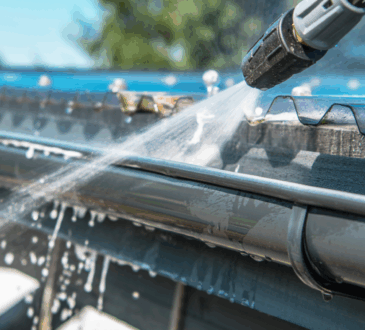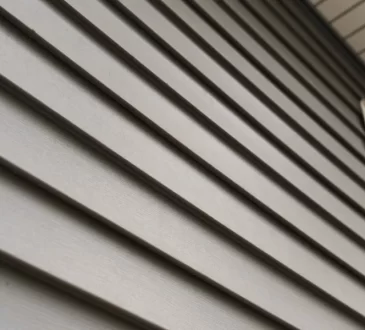
If you’re planning a big cleanup, renovation, or construction project, you’ve probably considered renting a dumpster. However, when looking at options, you may have come across both traditional dumpsters and roll-off dumpsters. While these two types of waste containers may seem similar, they’re actually designed for different purposes. Understanding the differences between a standard dumpster and a roll-off can help you decide which is best for your project. Here’s a guide to help you make an informed choice when it’s time to rent a roll-off dumpster or traditional dumpster.
What is a Standard Dumpster?
Standard dumpsters are often smaller, stationary containers commonly used for regular waste collection. You’ll typically find these behind businesses, apartment complexes, and restaurants. They’re designed for general waste disposal, with regular collection by waste management companies.
Key Features of Standard Dumpsters
- Smaller in Size: Standard dumpsters are generally smaller, ranging from 2 to 8 cubic yards, making them ideal for ongoing, low-volume waste disposal.
- Stationary Design: These dumpsters are designed to be stationary, placed in a permanent or semi-permanent location for regular trash collection.
- Lid Closure: Most standard dumpsters have lids to keep waste contained and prevent wildlife or weather from disturbing the contents.
Common Uses for Standard Dumpsters
Standard dumpsters are best suited for businesses and properties that generate regular, ongoing waste, such as office buildings, retail stores, and apartment complexes. They’re not designed for large-scale cleanup or renovation projects where high volumes of debris are generated in a short period.
What is a Roll-Off Dumpster?
A roll-off dumpster is a larger, temporary waste container commonly used for construction, remodeling, landscaping, and major cleanup projects. Unlike standard dumpsters, roll-offs are delivered and picked up as needed, and they’re ideal for handling large volumes of waste.
Key Features of Roll-Off Dumpsters
- Large Sizes Available: Roll-off dumpsters are available in larger sizes, typically ranging from 10 to 40 cubic yards, to accommodate a higher volume of waste.
- Open-Top Design: Roll-offs are open at the top, making it easier to load bulky items and construction debris.
- Wheeled Base for Easy Placement: Roll-off dumpsters have wheels on the bottom, allowing them to be rolled on and off the delivery truck, which is where the name “roll-off” comes from.
Common Uses for Roll-Off Dumpsters
Roll-off dumpsters are perfect for one-time projects that generate a significant amount of waste. Some of the most common uses include:
- Construction and Demolition Projects: Roll-offs are essential for collecting large debris, such as concrete, wood, and metal from construction sites.
- Home Renovations: Whether remodeling a kitchen, bathroom, or basement, roll-off dumpsters provide ample space for disposal of old fixtures, drywall, flooring, and other materials.
- Landscaping and Yard Cleanup: For major yard projects or storm cleanup, roll-offs make it easy to dispose of soil, branches, sod, and other organic waste.
If you’re dealing with a large-scale project, choosing to rent a roll-off dumpster ensures that you have the space and convenience needed for efficient waste disposal.
Key Differences Between Dumpsters and Roll-Offs
Understanding the primary differences between standard dumpsters and roll-off dumpsters can help you choose the best option for your waste disposal needs:
1. Size and Capacity
- Standard Dumpsters: Smaller in size, they’re best suited for regular, low-volume waste from businesses and residential complexes.
- Roll-Off Dumpsters: Available in larger sizes, making them ideal for construction, renovation, and cleanup projects that generate a lot of debris.
2. Mobility and Placement
- Standard Dumpsters: Stationary units placed permanently at one location for regular collection.
- Roll-Off Dumpsters: Temporary units with wheels, allowing them to be delivered and picked up as needed, typically on a scheduled basis.
3. Design and Loading Style
- Standard Dumpsters: Usually come with lids and are loaded from the side, ideal for regular trash disposal.
- Roll-Off Dumpsters: Open-top design makes it easier to load bulky and heavy items from above, perfect for large-scale projects.
When to Choose a Roll-Off Dumpster
For projects that generate significant waste, such as home renovations, construction, or large landscaping jobs, it’s best to rent a roll-off dumpster. Roll-offs offer the capacity and flexibility to handle bulky materials and higher volumes of waste, making them more suitable than a standard dumpster for short-term, high-intensity projects.
Final Thoughts: Choosing the Right Dumpster for Your Needs
Knowing the difference between standard dumpsters and roll-off dumpsters can help you make the right choice for your waste disposal needs. If you’re dealing with a one-time project that requires a large waste container, choosing to rent a roll-off dumpster is the ideal solution. However, if you need regular waste disposal for an office or apartment building, a standard dumpster might be the better fit. With the right dumpster, you’ll ensure efficient and effective waste management for any project.




